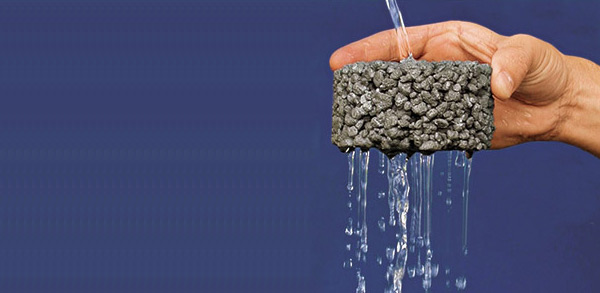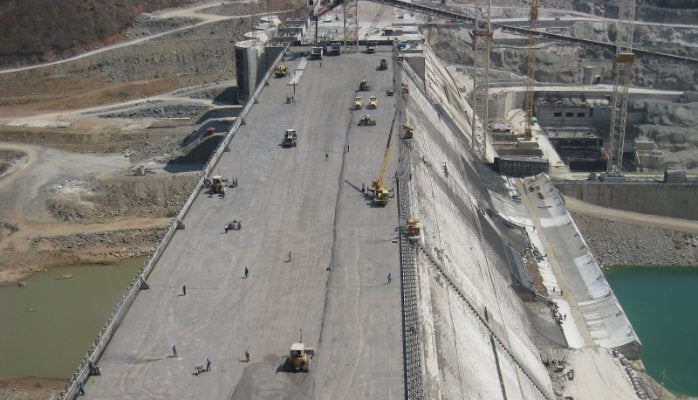Mass concrete is the oldest type of concrete ever used in building construction. As we can see today, old buildings are larger because only low-quality concrete is used to support the structure.
Definition of mass concrete – according to ACI
Bulk concrete is any volume of concrete where a combination of the dimensions of the element to be cast and the boundary conditions may result in undesirable thermal stresses, cracking, harmful chemical reactions, or a reduction in long-term strength as a result of increased temperature of the concrete. concrete. due to the heat of hydration.
Solid concrete is a type of concrete that is very useful for large projects, such as hydraulic structures. Let's discuss concrete in detail.


Properties of mass concrete
It is important to know the behavior of concrete before using it in different applications. The composition of the mixture should be based on its properties and intended behavior during its useful life.
- Strength of concrete mass
Generally, these types of concrete are used in structural elements that do not require greater compressive strength. On the other hand, if the structures are built in solid concrete, a greater resistance range is not necessary, as there is a large area of concrete to withstand the applied stresses.
The designer must ensure that tensile stresses are not created by loads placed on structures. However, there is a certain amount of tensile stress that can be allowed as concrete can accommodate tensile stresses that can be around 10% of its compressive strength.
- Bulk Concrete Mix Project
The most important component of these types of concrete is the composition of the mix, as many factors must be included and taken into consideration.
The following key factors, among others, are taken into consideration when designing the mixture.
-
- Low strength requirements
- Using Low Cement
- Development of compressive strength after 56-90 days
- Use of additives such as ground granulated blast furnace slag (GGBFS) and fly ash to reduce the cement content and therefore reduce the heat of hydration.


-
- Additionally, the shrinkage effect and construction processes, establishing time requirements
Taking these factors into consideration, the concrete mix is designed. Also, you can find more information in the article. Factors Affecting Concrete Mix For more information, read on.
- Thermal effects
For concrete with greater volume, the heat of hydration and cracking must be taken into account. The mixture must be designed to reduce the heat of hydration. To minimize thermal impact, the following factors must be taken into consideration.
-
- As explained above, the use of low cement content and the use of cement substitutes such as fly ash (class F fly ash is more suitable) and GGBFS could minimize the temperature rise.
- Core temperature rise should be limited to below 70-75°C. 0C
- The temperature difference between the core and the surface must be limited to 20-25 °C. 0C
- Performing a model test measures the above limitation. If not, make the necessary changes to the composition of the mixture. This can be done by continuously monitoring the temperature of the concrete.
- Cooling units, adding cold water, night concreting, etc. These are some of the most important aspects that need to be taken into consideration to reduce the increase in temperature.
- Concrete permeability
The permeability of concrete depends on its porosity. Porosity can be controlled by the following factors.
-
- Adjust the water-cement ratio respecting the requirements of the mix composition.
- Perform sufficient compaction of the concrete
- Proper healing
- Cement properties – select the appropriate type of cement
- Use of additives
- Types of aggregates used


- durability
The durability of concrete or structure is the most important aspect in modern design and construction. Previously, the strength of concrete was the main concern. However, with the results of old designs, the trend has not changed towards durability-based designs.
Therefore, the concrete grade, water-cement ratio, minimum cement content and cement type should be selected according to durability requirements.
Use of mass concrete
Mass concrete is mainly used in large-scale construction. Furthermore, there are also cases where mass concrete is poured without reinforcement. Let's discuss some of the applications in detail.
- Dam construction
Solid concrete is used in the construction of dams. Dams like the Hoover, 200 m wide, were built in solid concrete. This is good evidence that we can use concrete in construction in large quantities without reinforcement, maintaining the stability of the structure under very large lateral loads.
The article Types of dams And Force acting on the dam You can find more information about dams here.
- retaining walls
There are different types of retaining walls. There are reinforced concrete retaining walls, half gravity retaining walls and gravity retaining walls. Gravity retaining walls are constructed of solid concrete.
In retaining walls, lateral force is applied to the structure, resulting in the development of tensile stresses in the area on which the loads act. Gravity retaining walls are designed so that no stress is created on the surface of the concrete or the tensile stress developed is less than the tensile strength of the concrete.
The article on Retaining wall failure could be investigated for more information.
- Concreting of roads
In most cases, roads are made of solid concrete without reinforcement. Contraction and expansion joints are provided at regular intervals to accommodate thermal contraction and expansion.
Design of solid concrete structures
Unlike reinforced concrete structures, the construction of solid concrete structures is not that complicated. However, there are many factors that the designer must consider when considering the feasibility of the project.
The designer must be fully aware of this type of material behavior when designing a structure. Otherwise, a severely cracked, water permeable and less durable structure will result.
The following factors must be taken into account when designing
- Concrete selection. The article on How to choose concrete types For more information, see this page.
- Anticipate core temperature rise and temperature difference and take necessary measures to control them to prevent concrete cracking.
- The concrete mix must take into account the following aspects: Concrete durability and strength requirements
- Concrete fluidity for better performance during construction.
- Assess structural requirements for seismic impacts. Since unreinforced structures are weak under cyclic loading, necessary measures must be taken during construction.
- Construction joints in the structure
- Structure tightness
Main problems with solid concrete
- Flow problem
- Crack problem
- To maintain the stability of the structure, a large amount of concrete is required.
- Concrete durability problem
- Strength reduction

